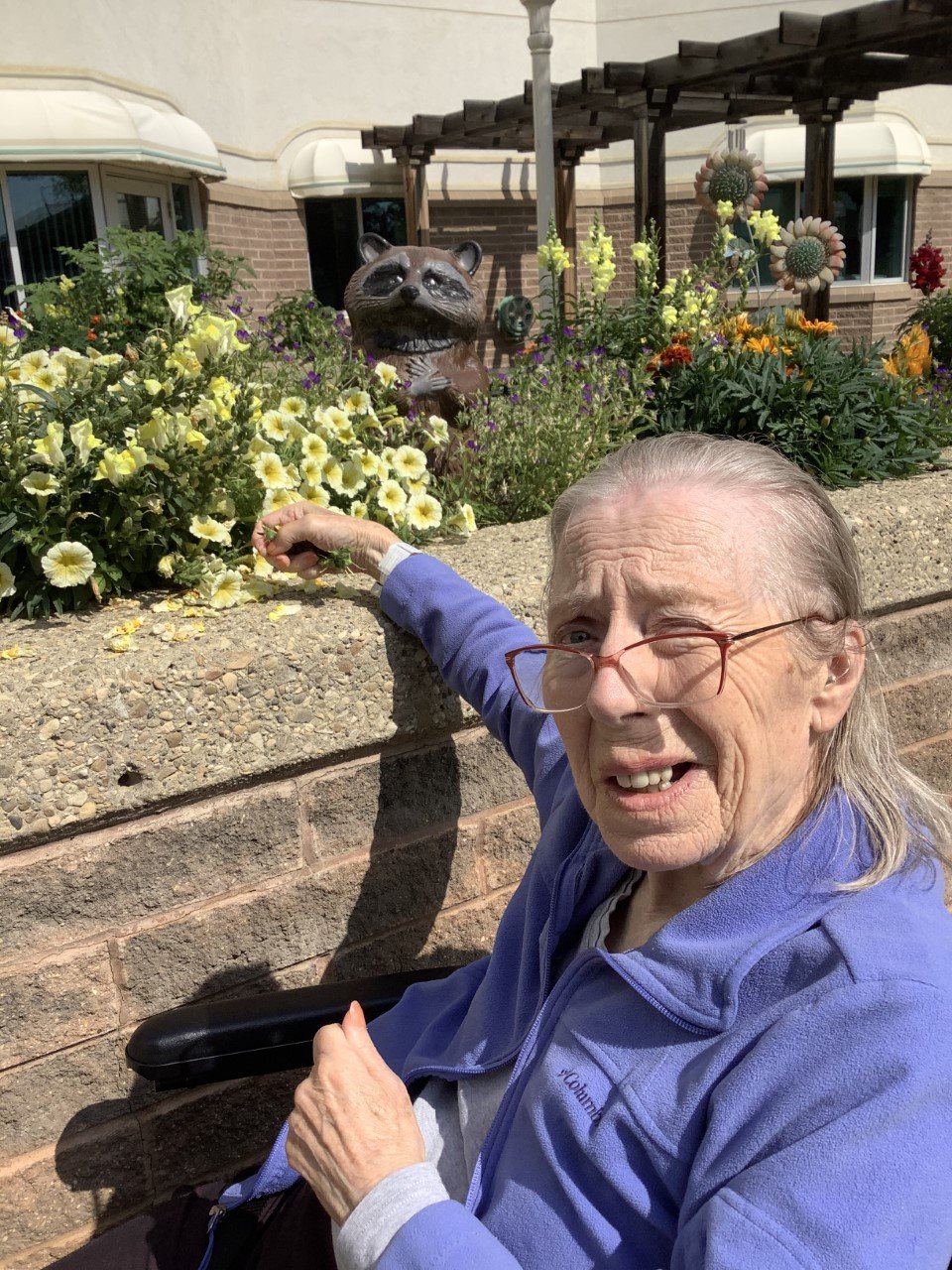Getting creative about staying active
How innovative therapy benefits seniors’ mental and physical health

May 11, 2020
By Alicia Johnson, Covenant Health
When Art Collier threw a cowboy hat through the hoop, it sparked good memories of rodeos, horseback riding and adventures during his childhood on the farm.
The cowboy hat toss was one of several activities held during rodeo week at Killam Health Centre. COVID-19 restrictions meant rehab assistant Kelby Erickson needed to get creative when she organized the second annual event for long-term care residents.
“A lot of the residents used to go to the rodeo every year or they know of someone who has been in the rodeo,” says Kelby. “I have been trying to make it fun, even though we are in a pandemic. Many of them come from that kind of background, and they really look forward to it.”
Activities included cow milking, target shooting, horse roping and line dancing. Residents were excited to participate, and they also enjoyed watching others take part.
“It brought back memories of watching the rodeos,” says Art, who has been living at Killam Health Centre since 2017. “We would sit on the bleachers and watch the mule races and chuck wagon races.”
Residents enjoy these creative activities, which are beneficial in many ways, says Cecilia Marion, senior director of operations for Youville Home and St. Joseph’s Auxiliary Hospital.
“In the long run, we know that any kind of activity is great medicine for your mental health,” says Cecilia. Research shows mental health and physical health can go hand in hand.
“Activity should be a priority because it keeps people physically and mentally well longer. As you age, and when you get into long-term care, your sense of independence can be stripped away from you because you often need someone to help you eat and get dressed. That affects your mental health in a negative way. Now if you can remain physically active, it can help you remain independent longer, helping your mental health as well.”

These benefits are why rehab assistants like Kelby go above and beyond to find fun activities to suit each resident.
“The residents laugh lots and are energetic when we do creative types of activities, and after they sleep better and are in a good mood. I even have some residents who tell their families not to call at certain times because they want to participate in the programs.”
This is why Kelby comes up with activities that interest each resident. She creates activities connected to their past occupation and their favourite sports or games and plans themed activities to match the holiday or season, helping the residents feel motivated to participate.
This rings true for recreation therapist Carolyn Rein at St. Joseph’s Auxiliary Hospital in Edmonton, who leads a gardening program during our summer months.
“Gardening involves lots of body movement. You set your own target rather than being told what to do, and residents get a sense of achievement because they work on the garden themselves,” says Carolyn. “We have people who won’t do anything else but gardening. There are so many mental and physical benefits that it makes it very worthwhile.”
Residents who can’t physically garden also enjoy the program since they can reminisce about their gardening experiences and exchange stories with one another. Once the garden is ready to harvest, the residents enjoy a meal made from the very vegetables they grew.
According to Cecilia, the social aspect of recreation therapy is very important for the residents' mental health.
“When we keep activities creative and get people in a group, there’s an immediate connection with the people they’re in the group with,” says Cecilia.
And this is one of Art’s favourite parts of rehab active therapy.
“I felt happy — I like doing activities with a group. I have always been a people person, and I like being with other people,” Art explains. “I like trying new things, and the activities make me feel relaxed and help me eat more. I really enjoyed the games.”